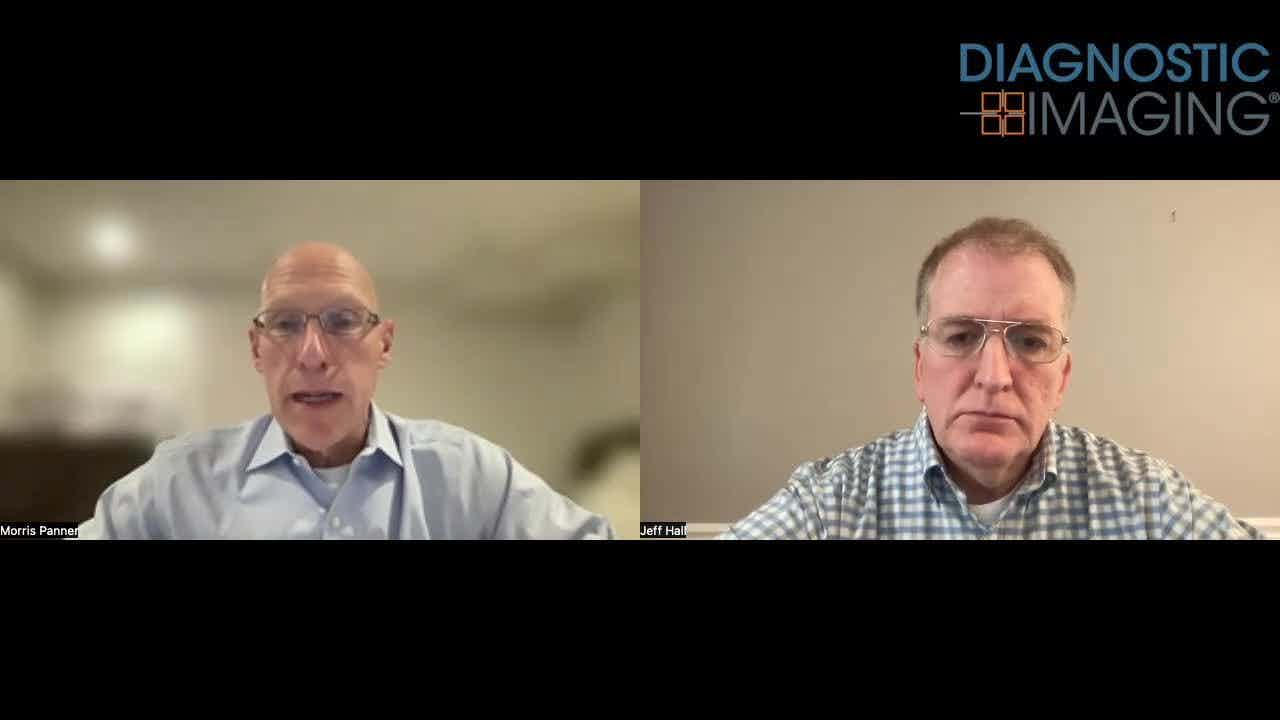Say Nothing
Say something, radiologist!
Perhaps it’s because I’ve heard the phrase “eat what you kill” in radiology more than a few times, but I sometimes liken the entities on my worklist to consumables.
For instance, in a relatively recent blog I referred to cases which were relatively quick to read (and of low reimbursement value) like X-rays as “bite-sized.” Knock-down, drag-out ordeals like multiphasic CTs from head to toe, restaging cancers in patients with multiple prior surgeries strike me as massive hoagies, overstuffed with unappetizing ingredients, defying the jaws to stretch around them and then punishing the remainder of the GI tract in hours to come.
Cousin to the bite-sized cases are some which resemble bits of candy, for they are quick and easy to read, but, miraculously, still of decent financial worth. One of which crossed my path a few days ago, in the form of sentinel-node scintigraphy.
The case, if you can even call it that, was done in an OR in one of the hospitals I remotely cover. All I had to do was dictate the surgeon’s name and dosage given, for there were no images to interpret. I guess the hospital, insurer, and/or government needed a radiologist involved for reimbursement.
The pleasure of the case had a smidge of discomfort to it, as I found myself struggling to find something else to dictate in my report. We’re not accustomed to saying little or nothing. Indeed, most of the non-interventional stuff we do in radiology centers on our putting words together to describe images we’re given. It’s easy to conclude that if we have nothing to say, we’re not showing our full value.
And we’re not the only ones prone to such thinking. Employers, insurers, even the government have gotten awfully comfortable stepping into our affairs to tell us that we MUST say something, even if we think it’s unwarranted in a given instance. Want to get paid for that abdominal ultrasound? You’d better mention the aorta and vena cava, even if they weren’t imaged worth a damn. (And don’t think you’ll be getting away by referring to the two unseen vessels with a single term like “vasculature,” smart guy.)
Much of which runs counter to what one might do otherwise. Pop culture has thoroughly trained us that anything you say when arrested may be used against you, and those of us under constant med-mal threat in health care know that, if accused, we are treated about as gently and respectfully as criminals once the legal machine gets ahold of us. Those of us old enough to have taken our Boards in Louisville were generally given similar advice before going there: The more you say, the greater the chance your examiner will recognize a hole in your knowledge-base and poke at it.[[{"type":"media","view_mode":"media_crop","fid":"39872","attributes":{"alt":"","class":"media-image media-image-right","id":"media_crop_4241419902386","media_crop_h":"0","media_crop_image_style":"-1","media_crop_instance":"4014","media_crop_rotate":"0","media_crop_scale_h":"0","media_crop_scale_w":"0","media_crop_w":"0","media_crop_x":"0","media_crop_y":"0","style":"height: 148px; width: 199px; border-width: 0px; border-style: solid; margin: 1px; float: right;","title":"©Yayayoyo/Shutterstock.com","typeof":"foaf:Image"}}]]
Saying nothing is also an underused move in negotiation or other diplomacy. A business-savvy friend of mine once observed that, in figuring salary or other payment for forthcoming services, “Whoever names the first number loses.” In contentious matters, having greater stamina to endure an uncomfortable silence can result in the other guy “blinking first” and saying something purely out of discomfort, giving ground at least on a psychological basis (and, depending on what he actually says, perhaps more).
Saying nothing is also not to be overlooked as a means for us to “do no harm.” Harking back to an older column of mine, one of my best preceptors during med school made it a central teaching theme that doing nothing is sometimes the wisest and/or kindest thing a physician can offer to a patient. Yet a potentially difficult thing to actually do, as the doc may not want to appear incapable or uncaring.
As diagnosticians (much like pathologists), radiologists are often in the role of being the “doctor’s doctor,” looked to for answers and recommendations when clinicians do not know how to proceed. Having nothing to say to them might not be ego-gratifying, and might even ruffle some feathers when the clinician wants us to definitively say something and we know we cannot, responsibly, do so.
All of which predisposes me to enjoy it that much more when I can safely indulge in the luxury of saying nothing. As I shall now demonstrate:
Could AI-Powered Abbreviated MRI Reinvent Detection for Structural Abnormalities of the Knee?
April 24th 2025Employing deep learning image reconstruction, parallel imaging and multi-slice acceleration in a sub-five-minute 3T knee MRI, researchers noted 100 percent sensitivity and 99 percent specificity for anterior cruciate ligament (ACL) tears.
The Reading Room: Artificial Intelligence: What RSNA 2020 Offered, and What 2021 Could Bring
December 5th 2020Nina Kottler, M.D., chief medical officer of AI at Radiology Partners, discusses, during RSNA 2020, what new developments the annual meeting provided about these technologies, sessions to access, and what to expect in the coming year.
New Collaboration Offers Promise of Automating Prior Authorizations in Radiology with AI
March 26th 2025In addition to a variety of tools to promote radiology workflow efficiencies, the integration of the Gravity AI tools into the PowerServer RIS platform may reduce time-consuming prior authorizations to minutes for completion.
Strategies to Reduce Disparities in Interventional Radiology Care
March 19th 2025In order to help address the geographic, racial, and socioeconomic barriers that limit patient access to interventional radiology (IR) care, these authors recommend a variety of measures ranging from increased patient and physician awareness of IR to mobile IR clinics and improved understanding of social determinants of health.










